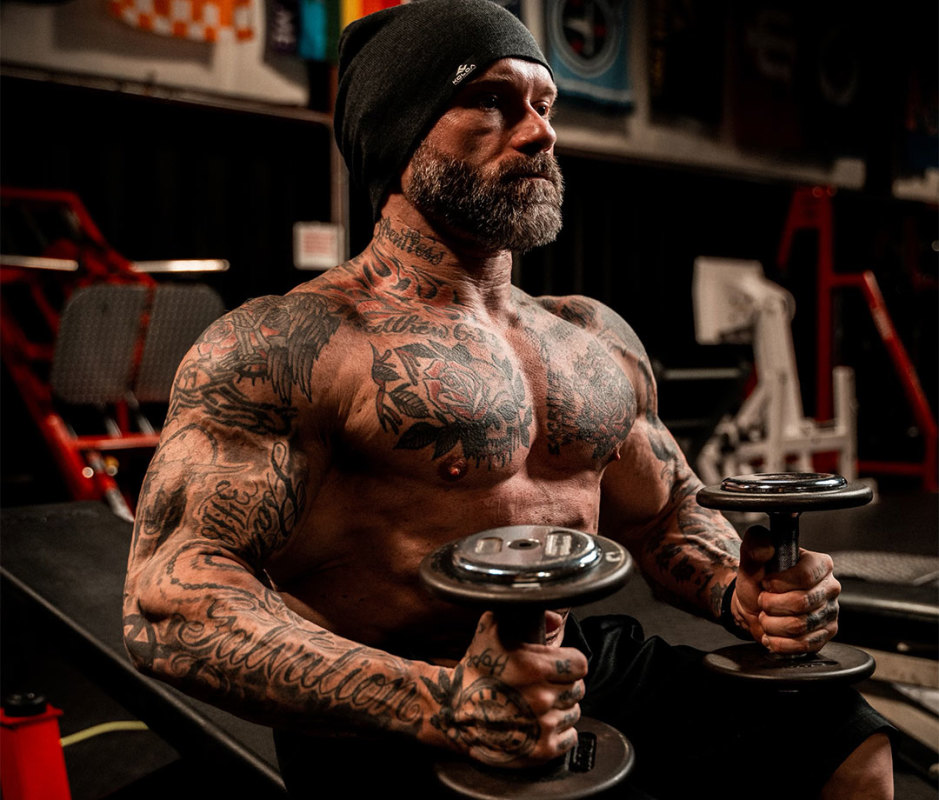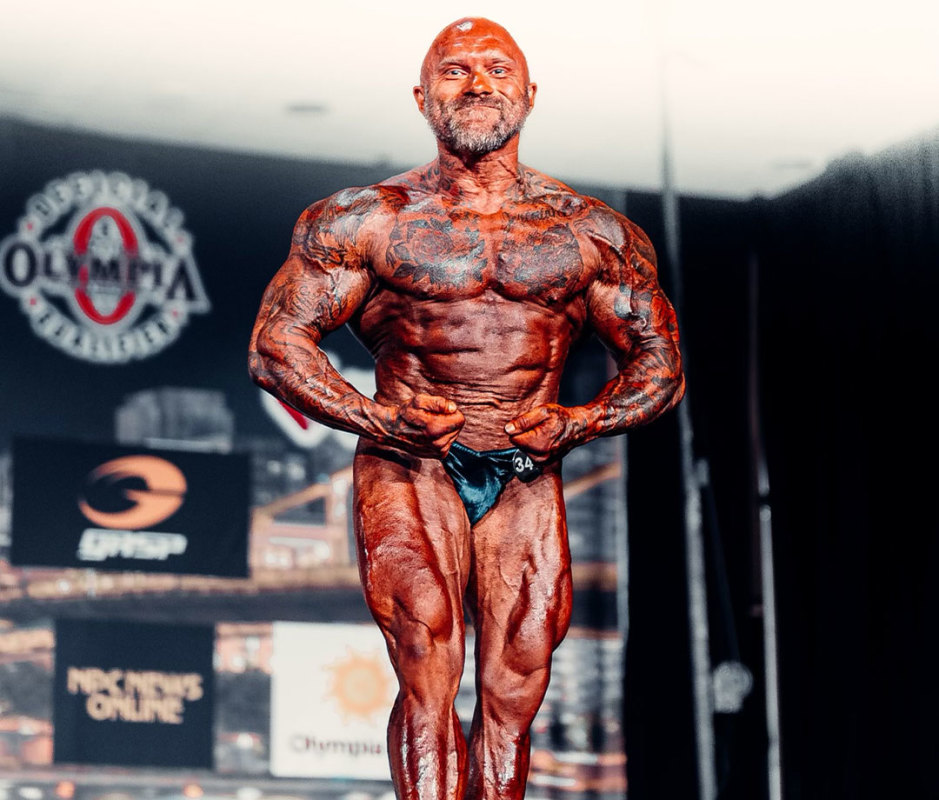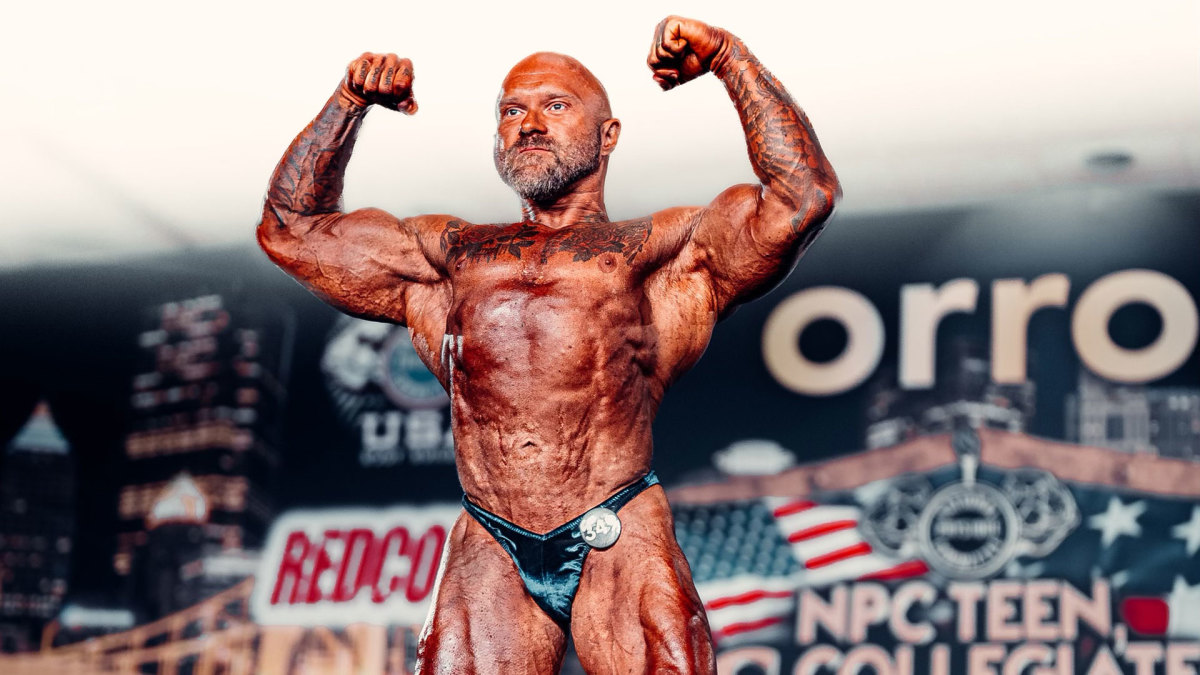Jeff Black, Nashville personal trainer and co-owner of Iron House Strength and Conditioning, performs in a bodybuilding show.
Courtesy Image
Growing up, Jeff Black was just like any other kid, or at least that's what it looked like from the outside. He spent most of the late 80s as typical Southern boys did: riding bikes with friends, playing baseball in the backyard with his dad, and chowing down during packed nights around his family's dinner table. It wasn't until he was eight years old that he really understood what it meant to be different, what it meant to be breakable.
Black was born with osteogenesis imperfecta (OI), a genetic or heritable disease where your bones break extremely easily, often with no obvious cause. While no one knows the exact number of people living with OI, estimates suggest 25,000 to 50,000 in the U.S. alone. There are nearly 20 different types of OI ranging from severe, meaning you could sneeze and break a rib, to mild (Type IV, what Black has), which may leave a patient appearing normal, but with a higher chance of breaking a bone than individuals without OI, according to the Cleveland Clinic.
While he remembers feeling different as a young kid, his parents never sat him down and told him, "Hey, you're frail."
"I actually think I had the right mom and the right dad to do what I needed to do to be where I am today," Black says. "There were no restrictions. There wasn't, 'Oh, let's put you in a bubble, make sure you're safe.' It was, 'Hey, if you break, you break.' "
But there were precautions his parents took to make sure he was safe. Contact sports like football and wrestling were out of the question, so he spent most of his time riding bikes around his neighborhood, playing baseball and basketball, and even skateboarding with the board his mom gave him—with the warning he could only use it in the driveway. But like most kids at that age, Black followed his parents' rules with his fingers firmly crossed behind his back. One afternoon in the spring of 1989, with his skateboard in tow, he snuck out to his friend's house, which was situated on the most prominent hill in the neighborhood, better known by the kids as Super Hill.
A Life-Altering Accident
Banding together, the boys decided to see who could take on the hill on their skateboards, first sitting down, then standing. Despite his mother's pleas swirling in his head, Black took his turn down the hill feeling invincible. That is, until halfway through, when a bout of fear made him jump off the board.
"The disgusting part is I was going so fast that momentum continued to carry me so that when my leg broke violently, I remember getting another step under that same leg as I screamed, rolling down the remainder of the hill before coming to rest in front of this family's mailbox," he wrote in his book Brittle to Unbreakable. "Then the rest went black."
After the accident, Black was transferred to the hospital where he would begin the first of nine surgeries over the next six years. According to him, "thing would ever be the same for me going forward as the innocence of the boy I was, remained on that hill."
The next several years were a mix of surgeries, more broken bones, full-body casts, and a bone stretcher machine that doctors used in an attempt to fix the one-inch discrepancy that occurred as a result of the rods that were put in his previously broken right leg. For the next 12 weeks after the bone stretcher was put on his leg, Black lived with the pain of continuous breaks and the inability to walk until his doctor unintentionally broke both his tibia and fibula trying to remove it.
"It's tough for me to make peace with what happened that day," Black wrote. "Some part of me cracks a smile, knowing it was the best thing that happened to me as it turned the key over, putting into drive the journey I was about to take."
For the next few months, Black spent his time between school and physical therapy, becoming beyond militant with his nightly stretches—his first taste of what it might feel like to have control over his own body since that day on his skateboard. Still, the next few years were a blur of more breaks, more surgeries, and the introduction of human growth hormone (HGH), which Black credits for his most stable progression in physical therapy.

Jeff Black holding dumbbells at his gym, Iron House Strength and Conditioning
Finding a Way in the Weight Room
The year he entered high school in the late summer of 1995, his life changed, this time for the better. While most of his days were plagued with pain and discomfort from sitting in unpadded chairs and trying to hide his limp as he walked through halls, when he stepped into the weight room in gym class, there was another discovery. He found comfort and purpose that started a fire in him like never before.
"Coach C was the football coach for our school," Black wrote. "Gym class with him was always good, but things changed when he brought us to the basement below the gymnasium where the weightlifting equipment was kept. I stood there transfixed by how raw and dirty it was. It was not the fitness center I was used to working out in. That's for sure."
As Black looked around the old-school weight room, his eyes fixated on a board with all the athletes' names and PRs. With a sinking feeling, he realized there was a good chance his name would never make it to the top of the list. Nevertheless, with a smile on his face, he headed to the dumbbell rack and pumped out a few sets of chest presses as he had done in physical therapy. Coach saw his sets and called him over to the bench to perform a few reps like the other boys in his class. A little weary, Black performed a rep, hitting a max of 95 pounds.
Solace in the Gym
"I wasn't the weakest among the other boys for at least one day in one thing," Black says of the moment. "It was the first time in a long time I felt like I belonged, and that one day would begin the changing of course."
High school wasn't easy for Black. Between teasing from classmates and negative self-talk in his own head, the weight room became his only solace.
"The gym was becoming a place to expel the energy I was tired of holding in and directing at myself," Black wrote. "Inside, hallowed screams filled the air as I buried myself alive with internal dialogue fit for depraved ears. The aggression had to go somewhere, and naturally, the gym became the thing to embrace that energy."
After regularly working out with a trainer at his local gym, Black began to recognize the reality that the gym could help him heal, at least partially. To be sure, his first few years gaining strength were not a cakewalk. He incurred a hip-to-hip hairline fracture in his pelvis after going hard on a leg press machine. But the setback never deterred him from getting back in the gym. While he loved working out, it wasn't until a midday trip to the grocery store with his mom that he discovered a bodybuilding magazine for the first time.
"Finding that magazine changed the entire trajectory of my life," Black says. "Because of that discovery, everything about who I was utterly changed. My confidence resurfaced as I found a new identity I could relate to."

Jeff Black at a bodybuilding competition
Pushing Back Against What Haunts Us
After college, the next several years of Black's life were filled with endless hours at the gym, a handful of steroid cycles, and some odd-end jobs that allowed him to work around a set training schedule and still make enough money to survive. During this time, he dealt with sleep deprivation and fought daily against the darkness that threatened to absorb him.
His embrace of bodybuilding and the discipline it took to pull himself out of that darkness gave him the strength to continue and become who he is today.
Since his first competition in 2006, Jeff has continued to defy the odds by working to improve his physique day after day and helping others do the same. For the last 19 years, Black has dedicated his life to helping people become the best versions of themselves as a personal trainer and co-owner of Iron House Strength and Conditioning in Nashville, TN.
"I've been able to train people from all walks of life. CEOs, homemakers, and everyone in between," Black says. "The majority of people all have regrets, and I think we always have to understand that while what we're going through is painful, the end is going to be more painful if we arrive there with a bunch of regrets. So I adopt the whole [thinking of] 'Don't live your life safely; you should try to arrive at death all used up.' "
Regardless of what you go through, nobody escapes this life without at least a few bumps, scars, and gnarly encounters. According to Black, it's not about what you've been through—it's about who you choose to become regardless of all that has weighed you down.
"Trauma comes in all forms," he wrote. "It attacks us when we least expect it, and it takes courage to push back against the things that fight like hell to consume us. Be proud you keep standing back up for one more round."

